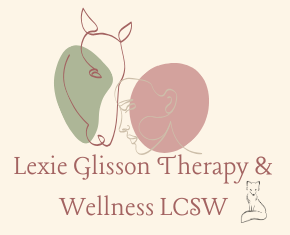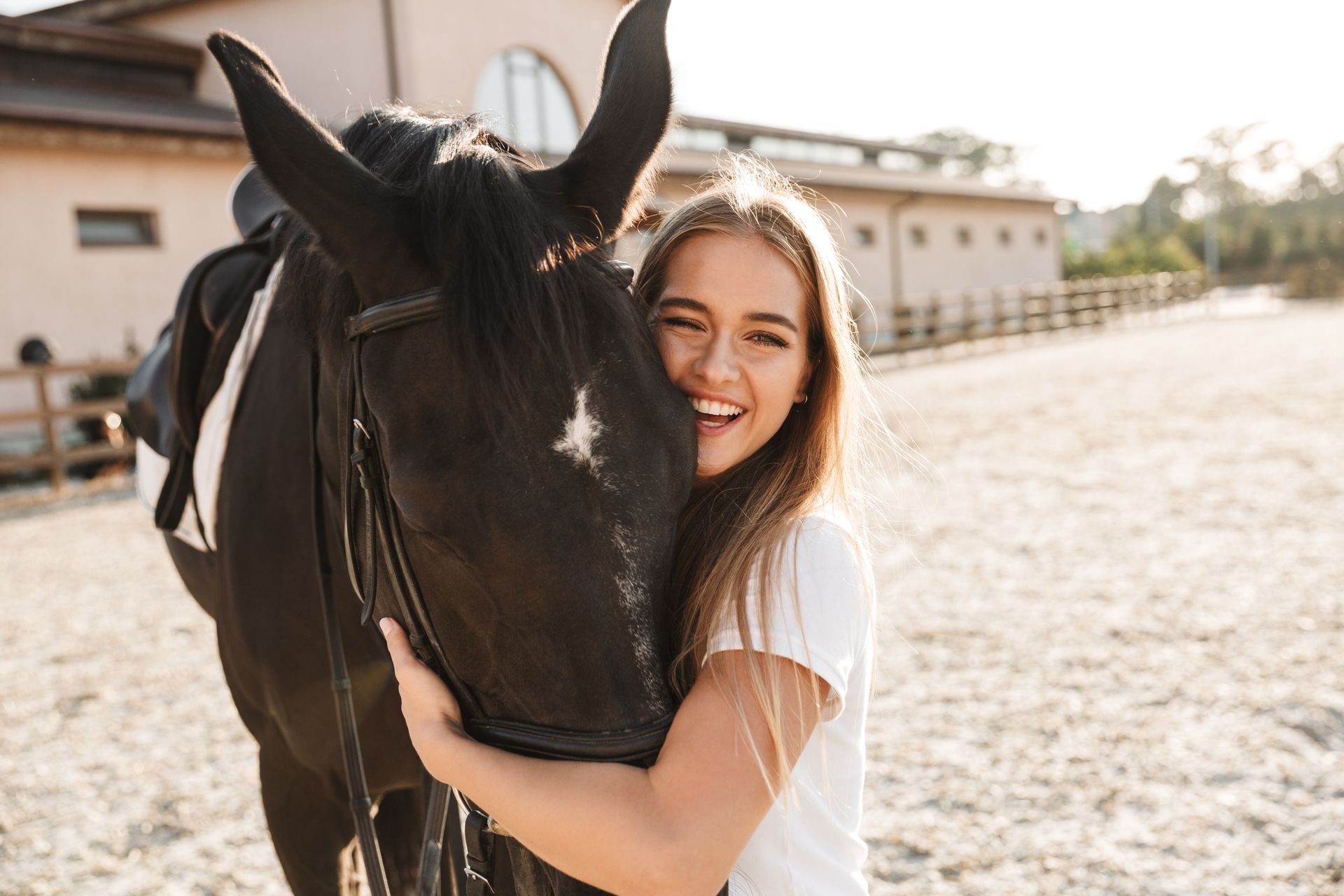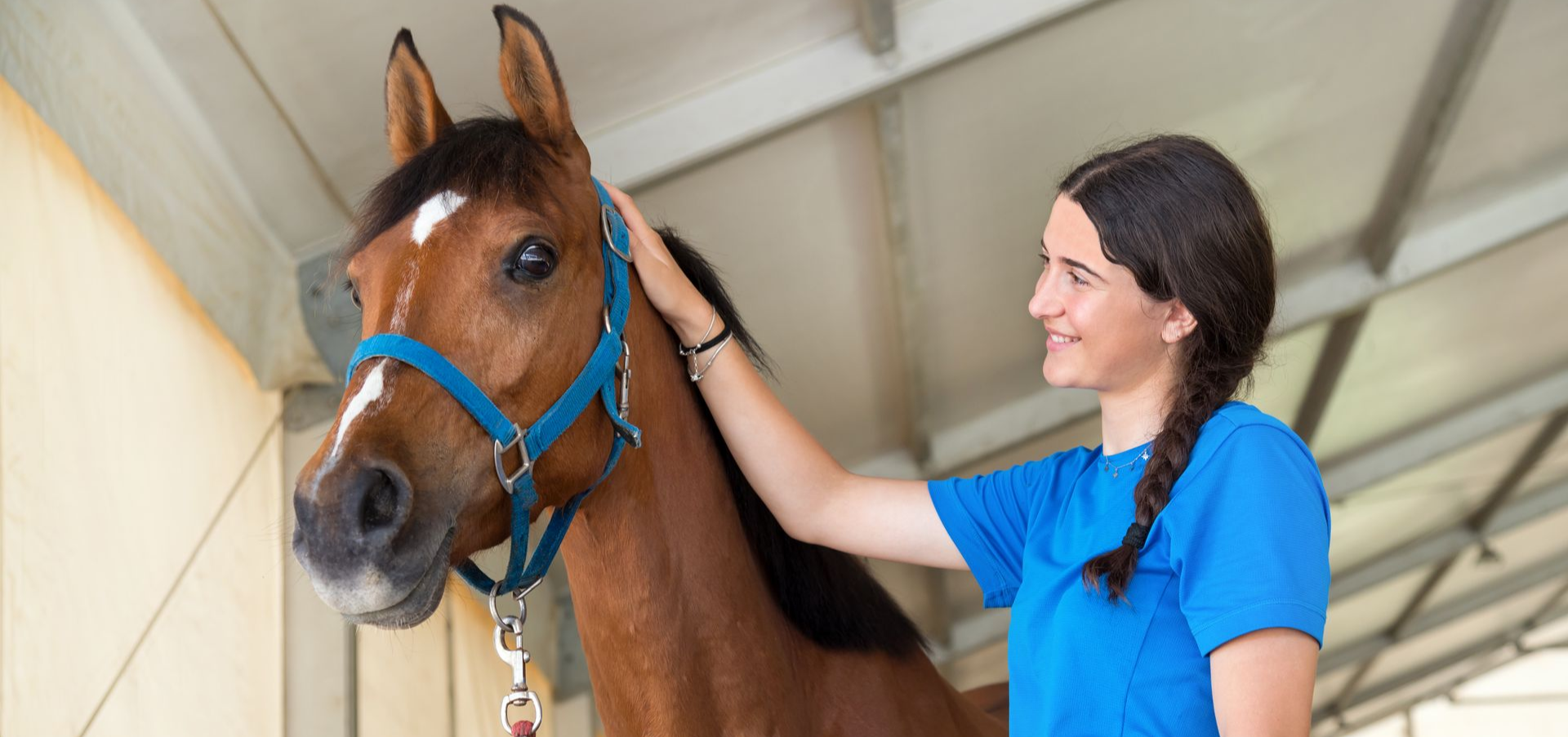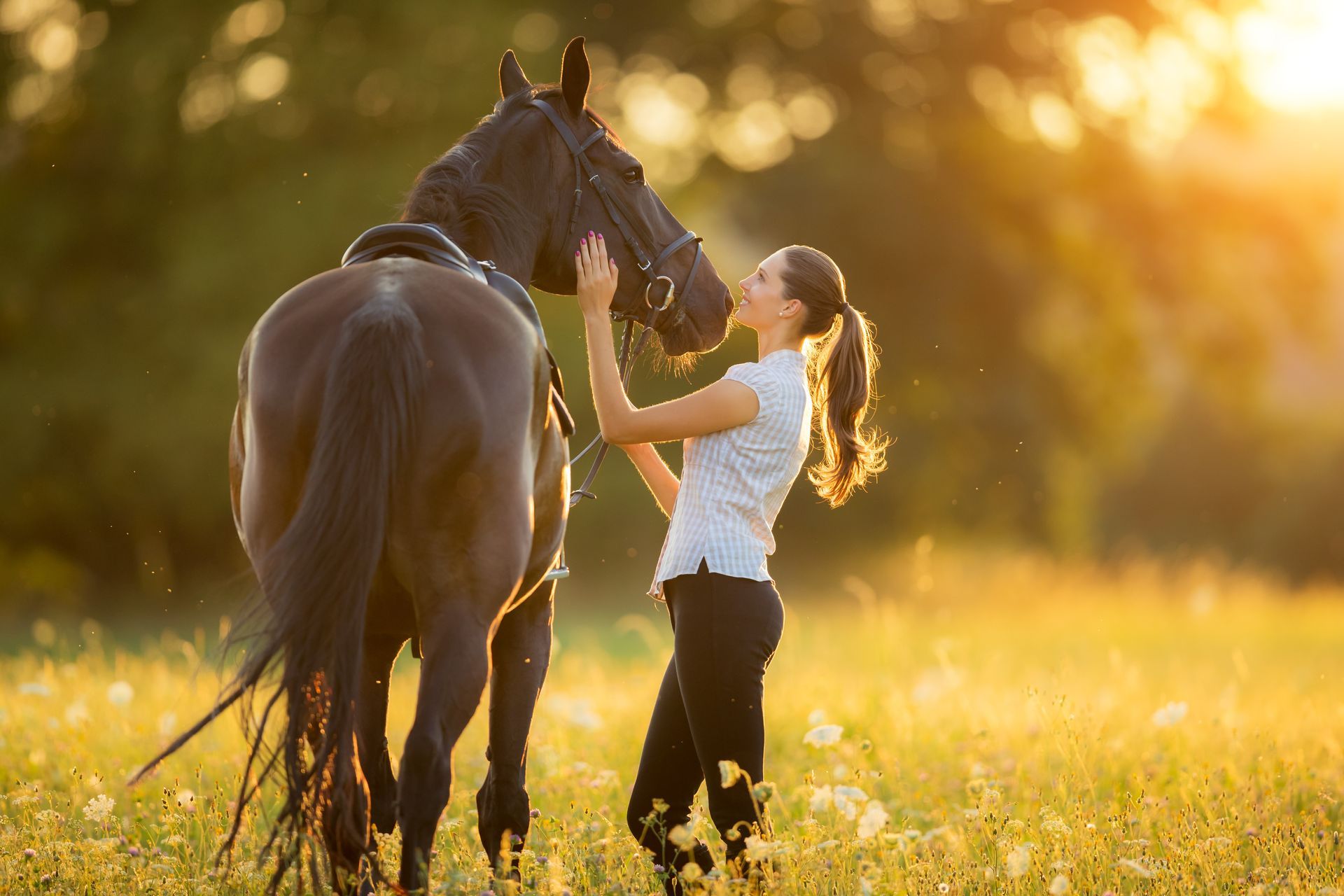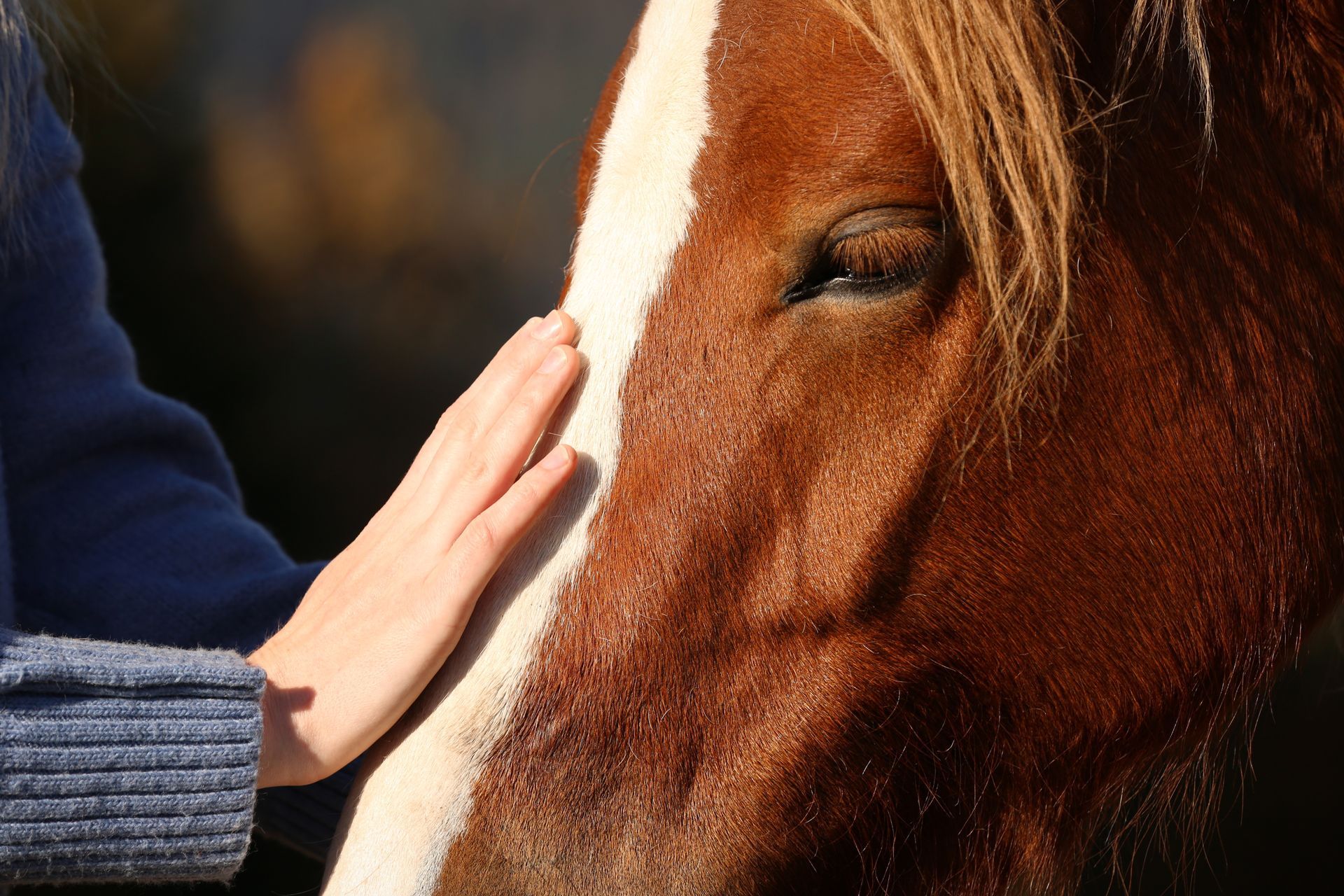In the arena with horses, I've learned one of life's most profound lessons: true leadership isn't about being hard or soft—it's about being both. Horses have taught me that the most effective leaders, the most magnetic partners, and the most trustworthy friends all share a common quality: they can hold structure while remaining soft, provide clarity while staying open, and offer strength while maintaining tenderness.
This dance between structure and softness isn't just essential for working with horses—it's the foundation of every healthy relationship in our lives.
Why Do Horses Need Both Structure and Softness?
Horses Seek Leaders Who Can Provide Safety and Connection
In the wild, horses follow leaders who can provide both protection and care. The lead mare must be strong enough to make quick decisions and guide the herd away from danger, yet soft enough to nurture the young and maintain social bonds. This combination of strength and tenderness creates the safety that allows the entire herd to thrive.
When working with horses, they're constantly assessing: "Can this human provide clear leadership when I need it? Can they also be gentle and responsive to my needs?" They need both the masculine container of structure and the feminine flow of softness to feel truly safe.
What Does Structure Look Like with Horses?
The masculine aspect of leadership—what I call the "container"—provides:
- Clear boundaries and expectations
- Consistent, reliable presence
- Decisive action when needed
- Protection and safety
- Direction and purpose
With horses, this shows up as:
- Clear, consistent cues and expectations
- Confident body language and energy
- Immediate, appropriate responses to boundary-testing
- Reliable leadership that horses can trust
- Direction that helps horses feel secure
What Does Softness Look Like with Horses?
The feminine aspect of leadership—the "flow"—provides:
- Emotional attunement and empathy
- Flexibility and adaptability
- Nurturing and care
- Intuitive responsiveness
- Connection and relationship
With horses, this shows up as:
- Gentle, responsive touch and energy
- Attunement to the horse's emotional state
- Flexibility in approach based on the horse's needs
- Nurturing presence that invites connection
- Intuitive adjustments to maintain harmony
What Happens When Structure and Softness Are Out of Balance?
Structure Without Softness Creates Fear
When leadership is all structure without softness, it becomes rigid, controlling, and fear based. Horses (and humans) may comply out of fear, but they don't truly trust or connect.
This creates:
- Compliance without engagement
- Suppressed authenticity
- Resentment and resistance
- Lack of genuine connection
- Stress and anxiety in the relationship
Softness Without Structure Creates Chaos
When leadership is all softness without structure, it becomes unclear, inconsistent, and anxiety-provoking. Without clear boundaries and direction, horses (and humans) feel unsafe and may become pushy or anxious.
This creates:
- Confusion about expectations
- Boundary violations
- Anxiety from lack of clear leadership
- Disrespect and pushiness
- Instability in the relationship
The Magic of Integration
When structure and softness are integrated, something magical happens:
- Trust deepens because others feel both safe and seen
- Authentic connection emerges because people can be themselves within clear boundaries
- Respect grows because leadership is both strong and caring
- Creativity flourishes because there's safety to explore within clear containers - Growth happens because there's both challenge and support
How Does This Apply to Romantic Relationships?
The Structure (Masculine Container) in Love
Clear communication about needs and boundaries:
- Expressing your needs directly and kindly
- Setting healthy boundaries without apology
- Following through on commitments consistently
- Being reliable and trustworthy in your actions
Providing emotional stability:
- Remaining calm during conflicts or stress
- Offering steady presence during your partner's difficult times
- Taking initiative in planning and decision-making when needed
- Creating safety through consistent, loving behavior
The Softness (Feminine Flow) in Love
Emotional attunement and responsiveness:
- Reading and responding to your partner's emotional needs
- Showing empathy and understanding during difficult times
- Being flexible and willing to adapt when circumstances change
- Offering comfort and nurturing when your partner is struggling
Vulnerability and openness:
- Sharing your own emotions and needs authentically
- Being receptive to your partner's feedback and requests
- Maintaining playfulness and joy in the relationship
- Staying open to growth and change together
The Integration in Romantic Relationships
Partners who can be both strong and tender, decisive and flexible, protective and nurturing create relationships where both people feel safe to be fully themselves. They can have difficult conversations with both honesty and compassion, make decisions together with both logic and intuition, and support each other with both strength and gentleness.
How Does This Apply to Parenting?
The Structure (Masculine Container) in Parenting
Clear, consistent boundaries:
- Setting age-appropriate rules and expectations
- Following through with consequences consistently
- Providing reliable routines and structure
- Teaching responsibility and accountability
Protection and guidance:
- Creating physical and emotional safety
- Offering direction when children feel lost or overwhelmed
- Modeling calm authority during challenging moments
- Helping children develop their own internal structure
The Softness (Feminine Flow) in Parenting
Emotional attunement and nurturing:
- Validating children's emotions and experiences
- Offering comfort during difficult times
- Being flexible based on each child's unique needs
- Responding intuitively to emotional cues
Connection and play:
- Creating space for joy and playfulness
- Showing genuine interest in your child's world
- Offering physical affection and emotional warmth
- Celebrating your child's unique qualities and growth
The Integration in Parenting
Children thrive with parents who can provide both clear structure and responsive care. They need to know the boundaries while also feeling deeply loved and understood. This integration helps children develop both self-discipline and self-compassion, both respect for others and confidence in themselves.
How Does This Apply to Friendships?
The Structure (Masculine Container) in Friendship
Reliability and consistency:
- Showing up when you say you will
- Being honest and direct in communication
- Maintaining healthy boundaries around time and energy
- Offering accountability and truth-telling when needed
Dependable support:
- Being present during friends' challenges
- Following through on commitments and promises
- Providing stable, consistent friendship over time
- Standing up for friends when they need support
The Softness (Feminine Flow) in Friendship
Emotional support and empathy:
- Listening without judgment or trying to fix
- Offering comfort and understanding during difficult times
- Celebrating friends' successes and joys
- Being flexible and understanding when plans change
Nurturing connection:
- Creating space for vulnerability and authentic sharing
- Showing genuine care and interest in friends' lives
- Being responsive to friends' changing needs
- Maintaining playfulness and joy in the friendship
The Integration in Friendship
The best friendships combine reliability with responsiveness, honesty with compassion, and strength with tenderness. Friends can count on each other for both practical support and emotional care, both honest feedback and loving acceptance.
How Does This Apply to Professional Relationships?
The Structure (Masculine Container) at Work
Clear expectations and boundaries:
- Communicating expectations clearly and directly
- Maintaining professional boundaries and standards
- Following through on commitments consistently
- Taking responsibility for your work and decisions
Competent leadership:
- Making decisions confidently when leadership is needed
- Providing direction and clarity during uncertain times
- Maintaining professional integrity and ethics
- Offering reliable, consistent performance
The Softness (Feminine Flow) at Work
Emotional intelligence and collaboration:
- Reading and responding to team dynamics
- Showing empathy and understanding for colleagues
- Being flexible and adaptable when situations change
- Creating inclusive, supportive work environments
Supportive presence:
- Offering help and support to colleagues when needed
- Celebrating team successes and individual achievements
- Being responsive to feedback and willing to adjust
- Maintaining positive, encouraging energy
The Integration in Professional Settings
The most effective leaders and colleagues can be both competent and caring, direct and empathetic, strong and supportive. They create work environments where people feel both challenged to do their best work and supported in their growth and development.
How Do I Develop Both Structure and Softness?
Developing Your Masculine Container (Structure)
- Practice clear, direct communication:
- Say what you mean without over-explaining or apologizing
- Set boundaries kindly but firmly
- Follow through on your commitments consistently
- Make decisions with confidence, even when uncertain
Build reliable presence:
- Show up consistently for the people in your life
- Be emotionally stable during challenging times
- Take responsibility for your actions and their impact
- Provide protection and safety when others need it
Strengthen your inner authority:
- Trust your judgment and decision-making ability
- Stand firm in your values and principles
- Take initiative rather than waiting for others to lead
- Develop confidence in your ability to handle challenges
Developing Your Feminine Flow (Softness)
Cultivate emotional attunement:
- Practice reading others' emotional states and needs
- Respond with empathy and understanding
- Validate others' experiences and feelings
- Offer comfort and support during difficult times
Embrace flexibility and responsiveness:
- Adapt your approach based on others' needs
- Stay open to new information and perspectives
- Flow with changing circumstances rather than rigidly resisting
- Let go of expectations when flexibility serves the relationship
Nurture connection and care:
- Show genuine interest and care for others
- Offer physical and emotional comfort when appropriate
- Create space for others to be vulnerable and authentic
- Celebrate others' successes and support their growth
What Does This Integration Look Like in Equine-Assisted Therapy?
Teaching Structure Through Horse Interaction
In my sessions, I help clients practice providing clear, confident leadership with horses:
Setting clear boundaries:
- Learning to ask horses to respect personal space
- Practicing consistent, understandable communication
- Following through with appropriate responses
- Creating safety for both horse and human
Embodying confident presence:
- Developing calm, grounded energy that horses can trust
- Making clear decisions and sticking with them
- Taking leadership when the situation requires it
- Building genuine confidence through successful interactions
Teaching Softness Through Horse Connection
I also help clients practice responsive, nurturing connection.
Emotional attunement:
- Reading and responding to the horse's emotional state
- Adjusting approach based on the horse's needs
- Offering comfort when horses are stressed or uncertain
- Building trust through gentle, caring interaction
Flexible responsiveness:
- Adapting methods when the horse gives feedback
- Staying open to what the horse is communicating
- Flowing with the horse's energy rather than forcing
- Trusting intuition about what the horse needs
The Integration in Action
The most powerful moments in equine therapy happen when clients find the integration point—when they can be both strong and soft, clear and caring, structured and flowing. Horses respond to this integration with trust, cooperation, and genuine connection.
When someone achieves this balance, horses will:
- Approach willingly and stay engaged
- Respond to requests with cooperation rather than resistance
- Show signs of relaxation and trust
- Mirror the person's calm, confident energy
- Engage in mutual, respectful interaction
How Can You Practice This Integration in Daily Life?
Start with Self-Awareness
Notice your natural tendencies:
- Do you tend to be more structured or more soft?
- In which situations do you default to one extreme?
- How do others respond to your current leadership style?
- What would more balance look like for you?
Pay attention to your body:
- How does it feel when you're being too rigid?
- How does it feel when you're being too flexible?
- What does integrated leadership feel like in your body?
- How does your energy change when you find the balance?
Practice in Low-Stakes Situations
Try more structure when you're usually too soft:
- Set a clear boundary with a friend about your time
- Make a decision confidently without seeking multiple opinions
- Follow through on a commitment even when it's inconvenient
- Speak directly about a need rather than hinting
Try more softness when you're usually too structured:
- Respond with empathy before offering solutions
- Adapt your plans when someone else has different needs
- Show vulnerability by sharing your own struggles
- Offer comfort without trying to fix the situation
Use Feedback from Relationships
Notice how others respond:
- Do people seem to trust your leadership?
- Do they feel safe being vulnerable with you?
- Are they both respectful and authentic in your presence?
- Do your relationships feel balanced and mutual?
Ask for direct feedback:
- "How do you experience my leadership style?"
- "Do you feel both supported and challenged by me?"
- "What would help you feel safer in our relationship?"
- "How could I better balance structure and care?"
Why Do Horses Respond So Well to This Integration?
They Need Both for Survival
In the wild, horses need leaders who can make quick, decisive decisions (structure) while also maintaining social bonds and caring for the herd (softness). This integration is literally a matter of survival for them.
They Can Sense Authenticity
Horses immediately sense when someone is trying to be only strong or only soft. They respond most positively to humans who can authentically embody both qualities because it feels natural and safe to them.
They Mirror Our Integration
When we find the balance between structure and softness, horses mirror that balance back to us. They become both respectful and affectionate, responsive and engaged, showing us what healthy relationship looks like.
They Teach Us Through Immediate Feedback
Horses provide instant, honest feedback about our energy and approach. If we're too rigid, they become resistant or shut down. If we're too soft, they become pushy or anxious. When we find the integration, they respond with trust and cooperation.
The Ripple Effect in Your Life
When you learn to integrate structure and softness—whether through working with horses or other practices—the effects ripple out into every area of your life:
- Your relationships deepen because people feel both safe and seen with you, leading to more authentic, trusting connections.
- Your leadership improves because others respond to your balanced authority with respect and cooperation, whether in professional settings or personal relationships.
- Your confidence grows because you develop genuine confidence that comes from knowing you can be both strong and caring, depending on what's needed.
- Your authenticity emerges because you stop trying to be only one way and start expressing the full range of your natural leadership abilities.
- Your impact expands because people are naturally drawn to leaders who can hold both structure and softness, allowing you to influence and support others more effectively.
The Ongoing Dance
The dance between structure and softness isn't something you master once—it's an ongoing practice of attunement, adjustment, and integration. Some situations call for more structure, others for more softness, and the art is in knowing which is needed when.
Some days you'll lean too far toward structure and need to soften. Other days you'll be too flexible and need to strengthen your boundaries. This isn't failure—it's the natural process of learning to dance between these complementary energies.
The Invitation
Horses are master teachers of this integration because they live it naturally. They can be both powerful and gentle, strong and nurturing, decisive and responsive. They show us that we don't have to choose between being strong or being soft—we can be both.
The world needs leaders who can hold both structure and softness, who can be both strong and caring, who can provide both direction and connection. Whether in your romantic relationships, your parenting, your friendships, or your professional life, this integration creates the foundation for relationships where everyone can thrive.
If you’re ready to explore how the integration of strength and softness can transform your relationships and leadership, connect with Lexie Glisson, Licensed Clinical Social Worker and Certified Equus Coach, to begin your own journey of growth and transformation. Embrace the dance between strength and tenderness, and step into the kind of leadership that inspires trust and connection wherever you go.
